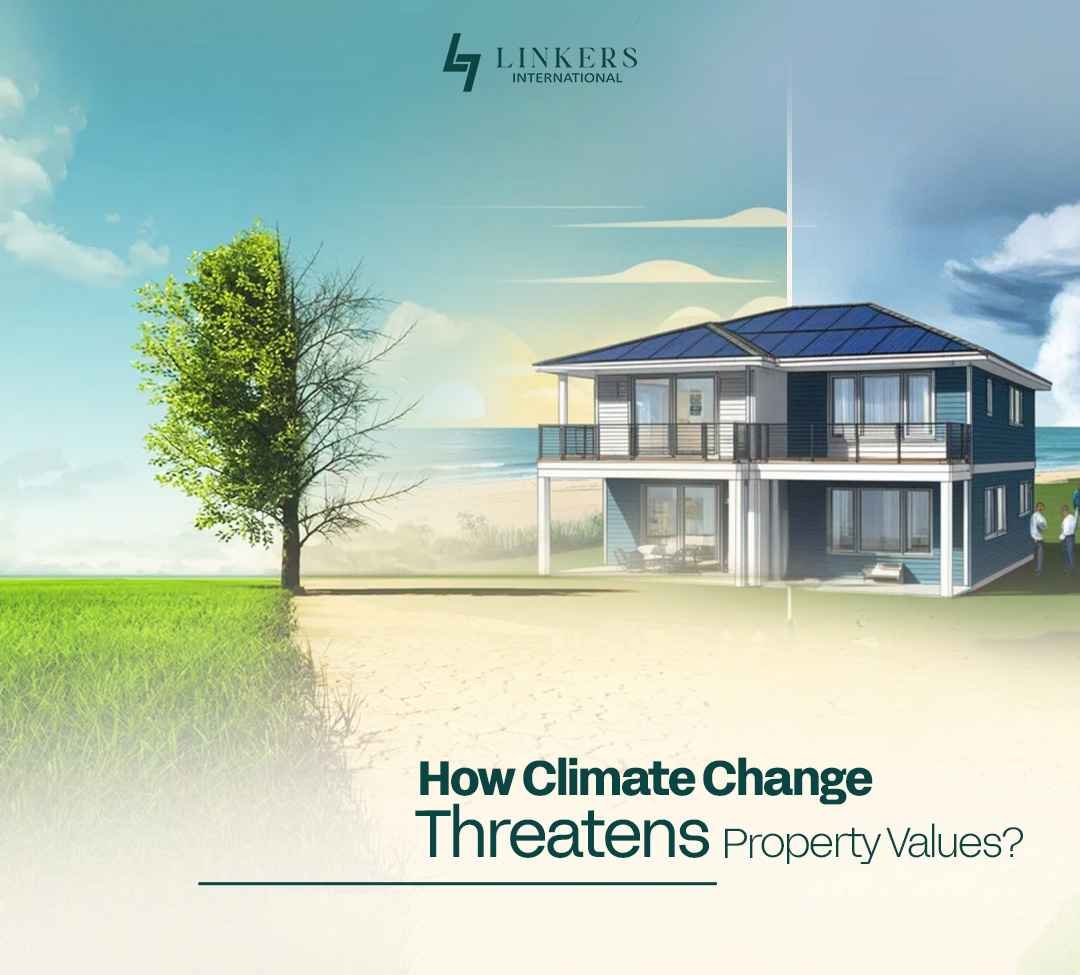Climate change isn’t just an environmental concern; it is increasingly a financial one, especially for properties in coastal, flood‑prone, or high‑risk zones. Rising sea levels, more frequent extreme weather, erosion, saltwater intrusion, and shifting ecosystems all pose real risks that can degrade property values, inflate maintenance and insurance costs, and erode investor confidence.
According to climate risk projections and urban planning data, properties in flood-prone and coastal areas of Pakistan, particularly in cities such as Karachi and Lahore, could see a value decline of 10–20% over the next decade. Housing schemes near rivers, such as along the Ravi in Lahore, are particularly vulnerable and may face devaluation as climate risks intensify.
How Climate Change Translate Into Threats to Property Value?
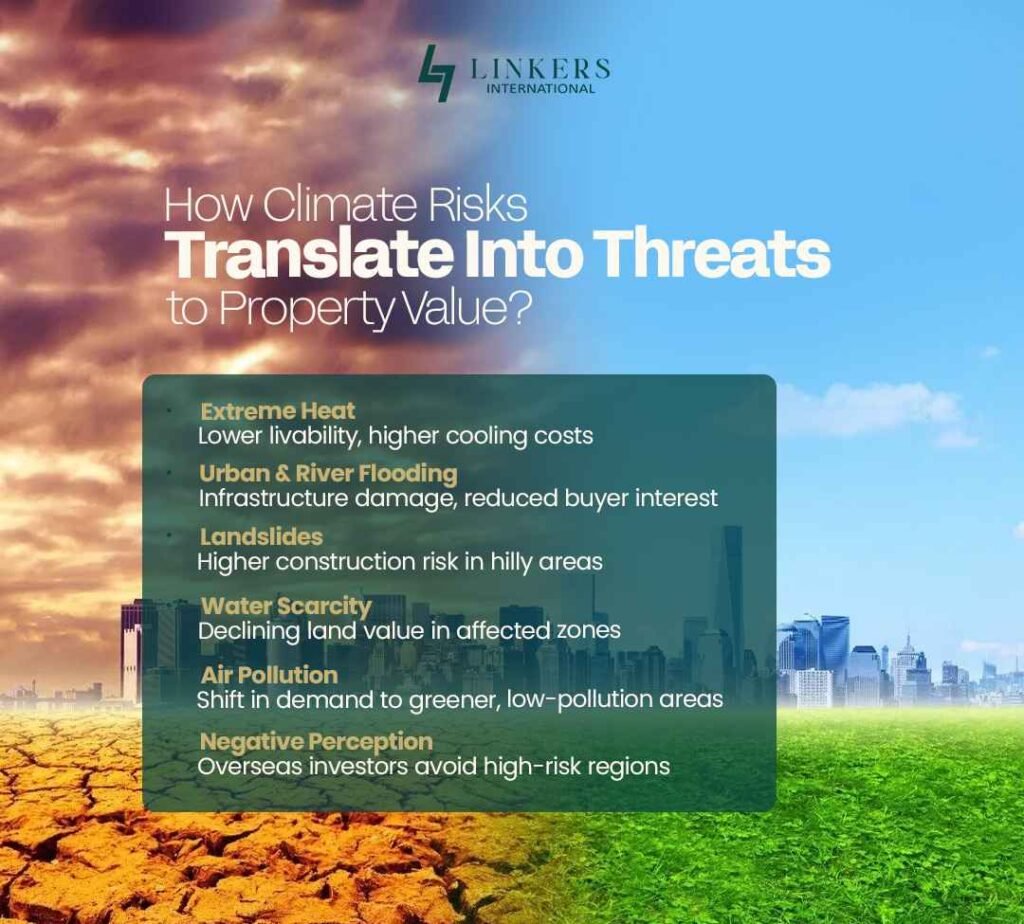
Pakistan’s geography, rapid urbanization (especially in coastal regions), and climate profile make it particularly vulnerable. Below are the ways these risks in Pakistan may lead to declining or threatened property values, well before outright loss of land.
Extreme Heat & Urban Heat Island Effect
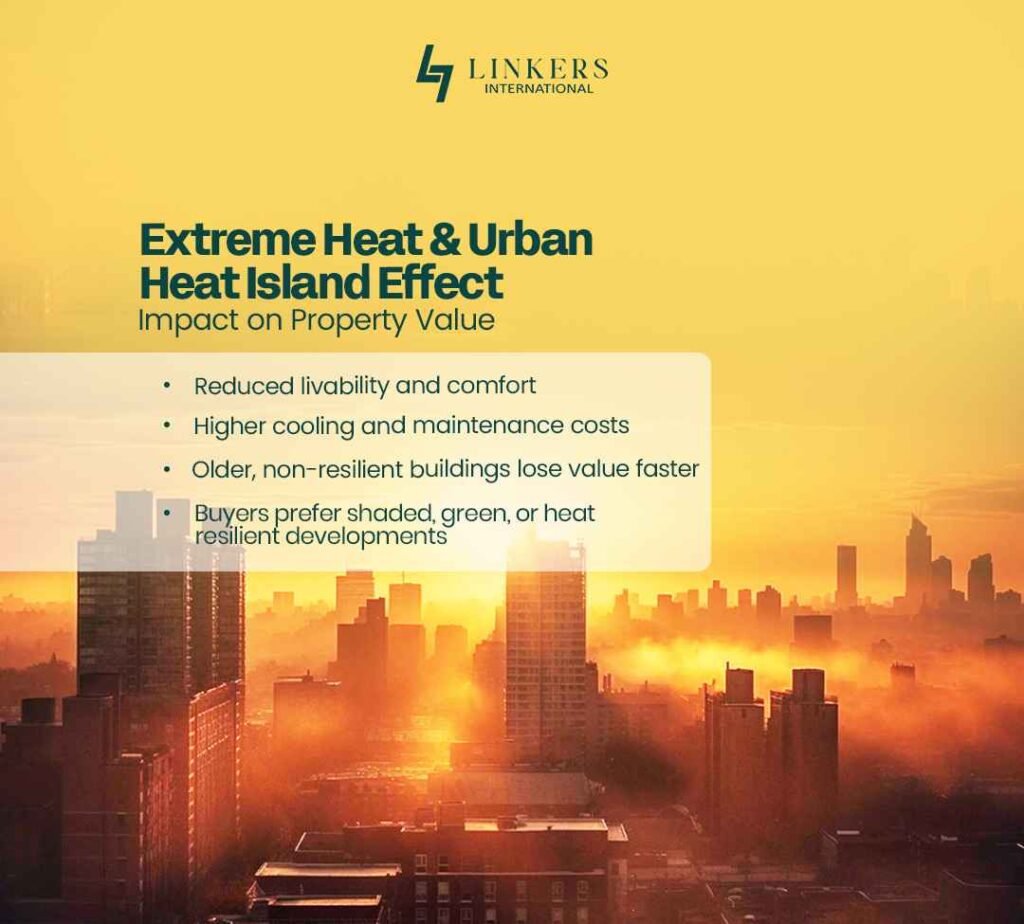
Cities like Lahore, Multan, Faisalabad, and Peshawar are experiencing rising temperatures and prolonged heatwaves. Dense construction and lack of greenery trap heat, making urban areas significantly hotter. In Lahore, temperatures often exceed 45°C, making unshaded housing schemes less attractive.
Impact on Property Value:
- Reduced livability and comfort
- Higher cooling and maintenance costs
- Older, non-resilient buildings lose value faster
- Buyers prefer shaded, green, or heat-resilient developments
Urban Flooding
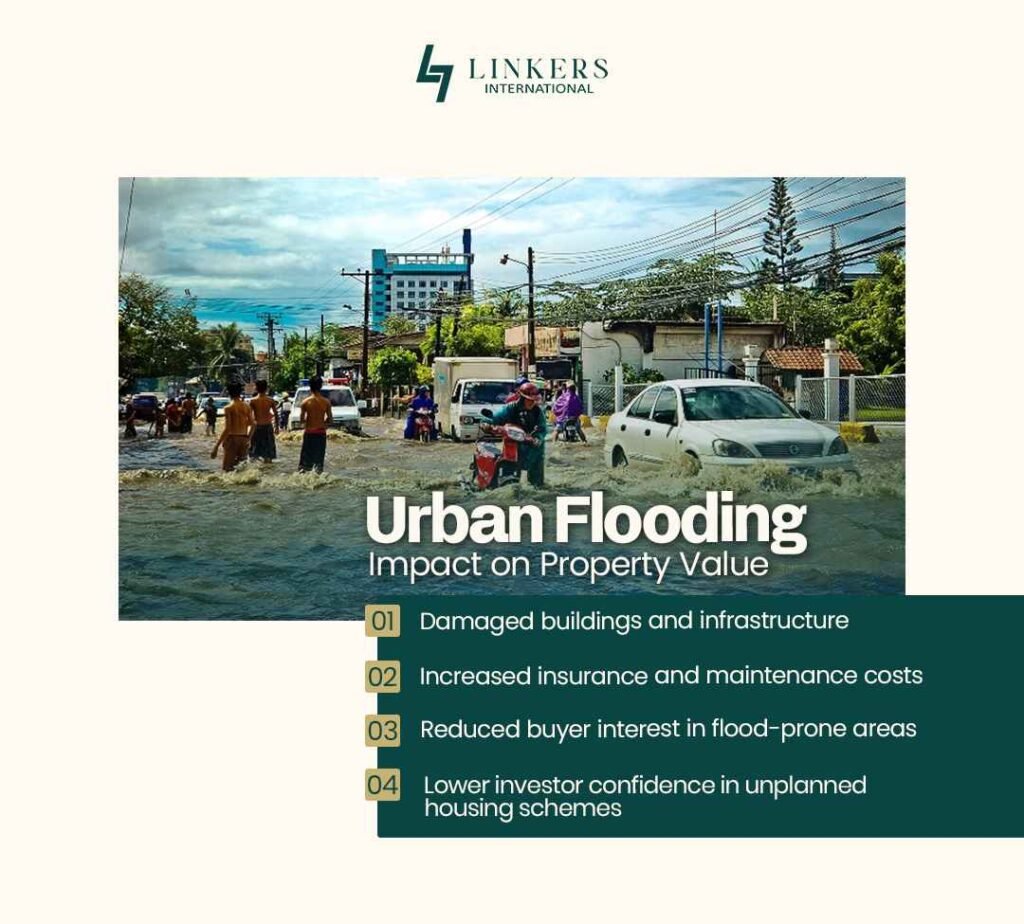
Sudden, intense rainfall due to climate change overwhelms poor drainage systems in major cities, causing frequent flash flooding. In Peshawar and Rawalpindi, many areas face repeated flooding issues.
Impact on Property Value:
- Damaged buildings and infrastructure
- Increased insurance and maintenance costs
- Reduced buyer interest in flood-prone areas
- Lower investor confidence in unplanned housing schemes
Riverine Flooding
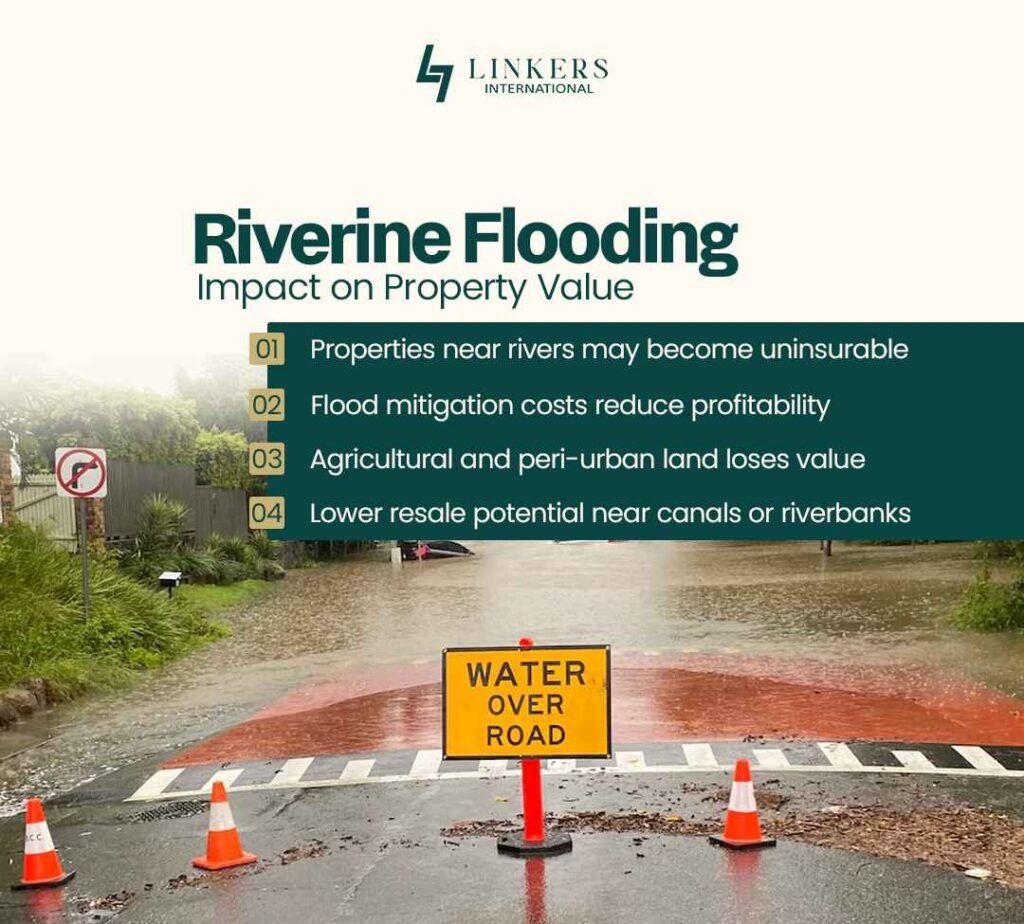
Rivers such as the Indus, Chenab, Ravi, Swat, and Kabul overflow during monsoon seasons. Glacial melt and erratic rainfall worsen the situation. The 2022 floods damaged property worth billions in Rajanpur, DG Khan, Swat, and Nowshera. And the recent floods in August 2025 have also damaged many properties in Gilgit-Baltistan and KPK.
Impact on Property Value:
- Properties near rivers may become uninsurable
- Flood mitigation costs reduce profitability
- Agricultural and peri-urban land loses value
- Lower resale potential near canals or riverbanks
Landslides & Slope Instability
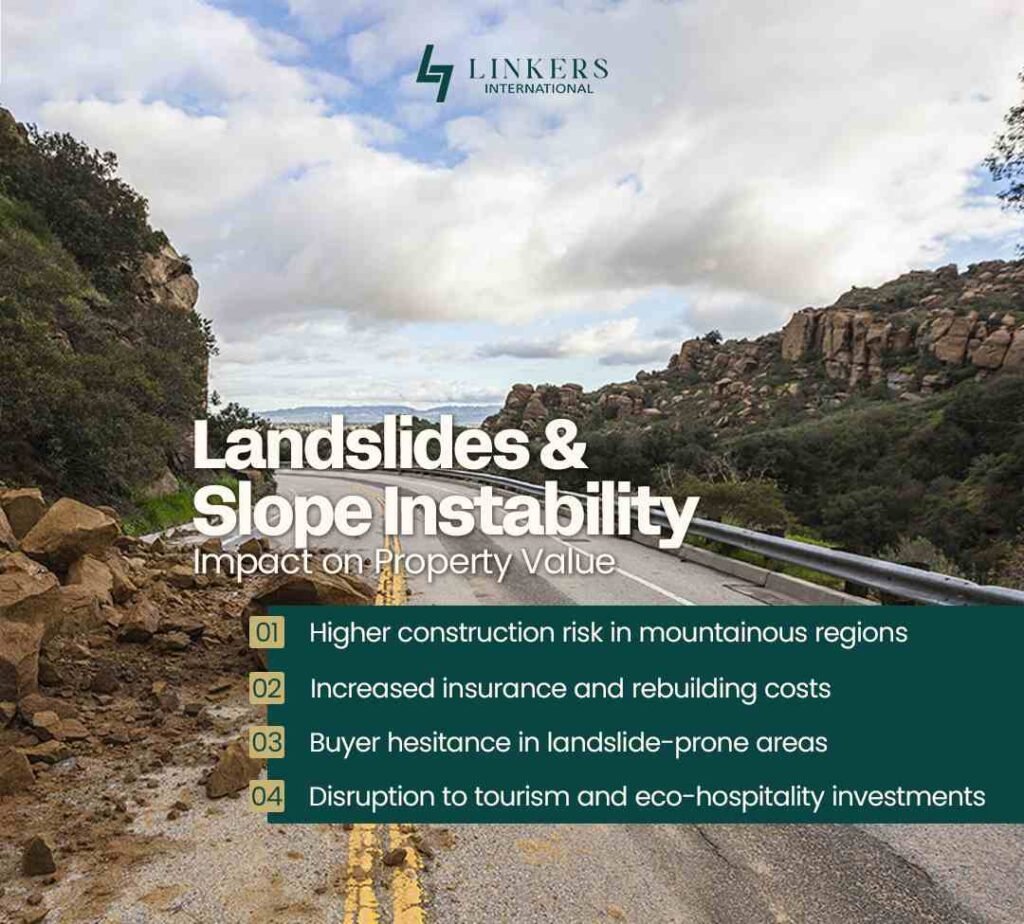
Deforestation and heavy rains in hilly areas like Swat, Abbottabad, Mansehra, and Dir increase the risk of landslides. In Kumrat and Swat, landslides have destroyed guesthouses and damaged roads.
Impact on Property Value:
- Higher construction risk in scenic or mountainous regions
- Increased insurance and rebuilding costs
- Buyer hesitance in landslide-prone areas
- Disruption to tourism and eco-hospitality investments
Water Scarcity & Groundwater Depletion
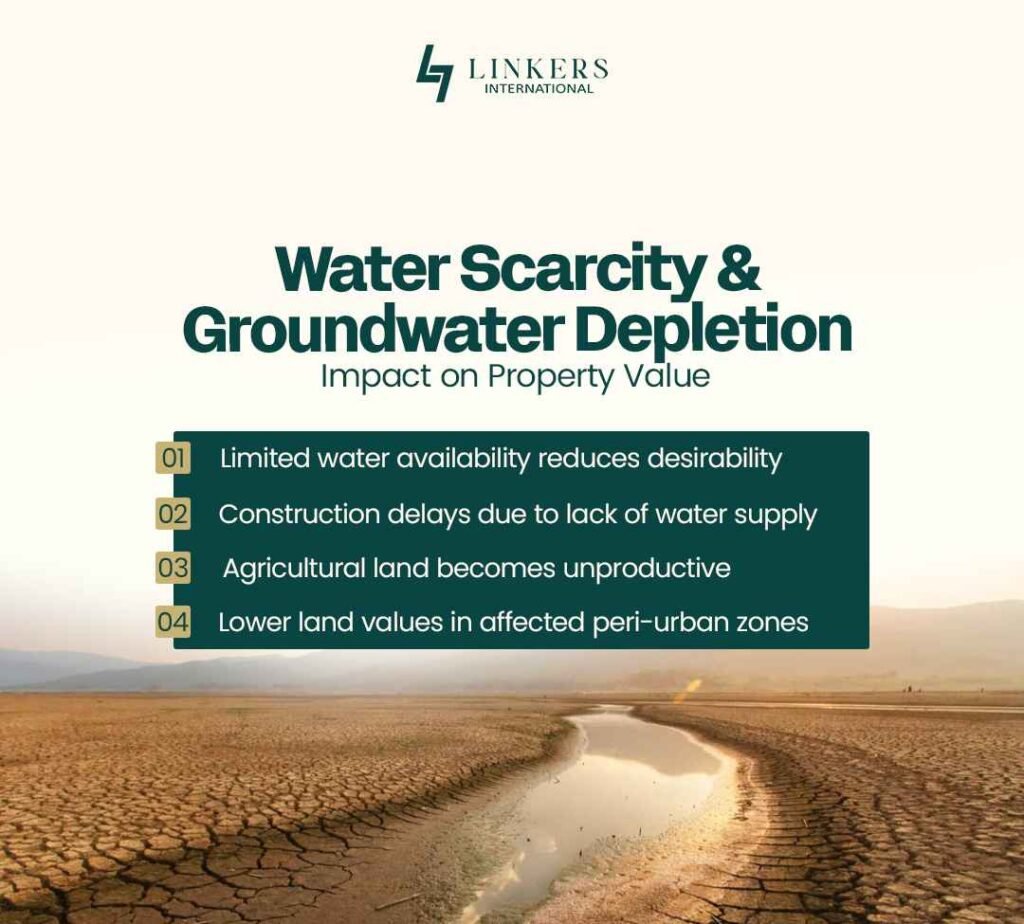
Groundwater levels are rapidly declining in areas like Islamabad, Bahawalpur, Multan, and Mianwali due to over-extraction and reduced rainfall.
Impact on Property Value:
- Limited water availability reduces desirability
- Construction delays due to lack of water supply
- Agricultural land becomes unproductive
- Lower land values in affected peri-urban zones
Air Pollution
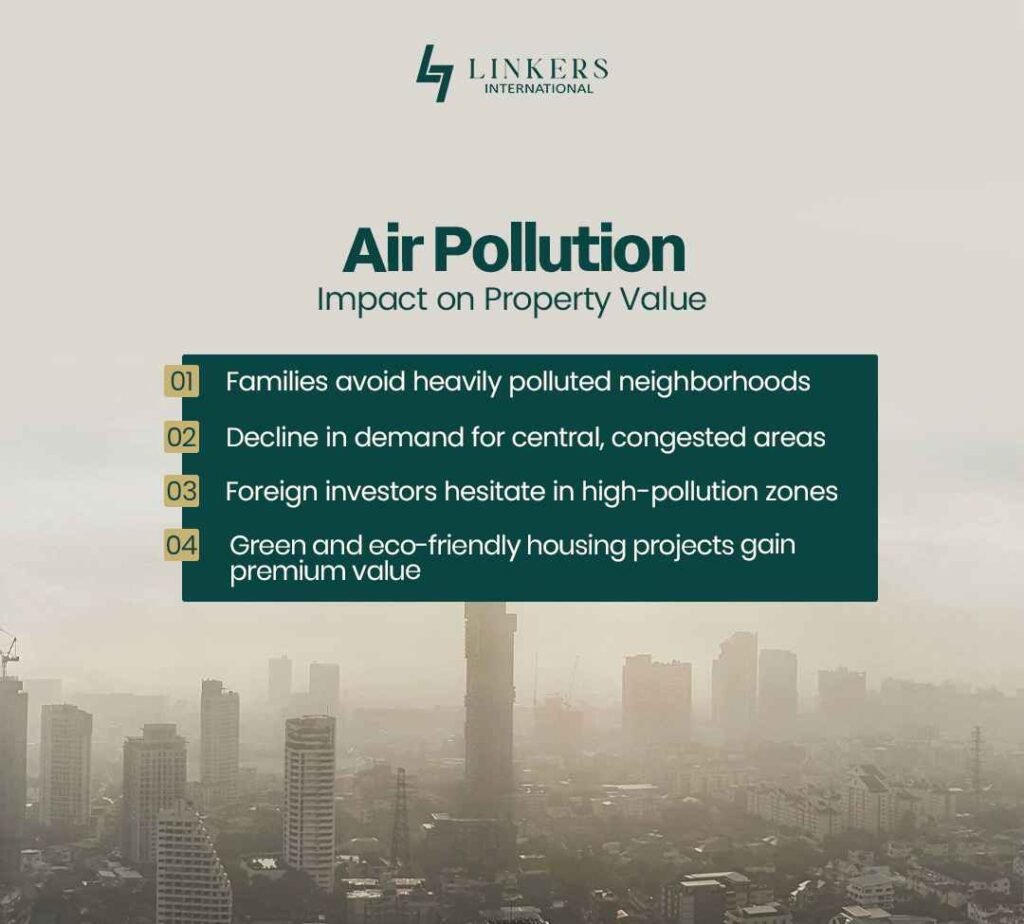
Cities such as Lahore, Faisalabad, Gujranwala, and Peshawar suffer from extreme air pollution, especially during the winter smog season. In Lahore, smog season lowers interest in central areas, shifting demand to cleaner zones like Bahria Orchard or Raiwind.
Impact on Property Value:
- Families avoid heavily polluted neighborhoods
- Decline in demand for central, congested areas
- Green and eco-friendly housing projects gain premium value
- Foreign investors hesitate in high-pollution zones
Coastal Flooding & Storm Surges
Frequent flooding and storm surges increase repair and maintenance costs. This drives up insurance premiums and lowers buyer interest in vulnerable properties.
Negative Buyer Sentiment & Risk Perception
As awareness of climate risks grows, buyers may avoid or devalue properties in high-risk zones. Overseas investors, in particular, may see these as too risky, affecting both demand and financing options.
Implications of Climate Change for Developers, Investors, and Buyers in Pakistan & Globally
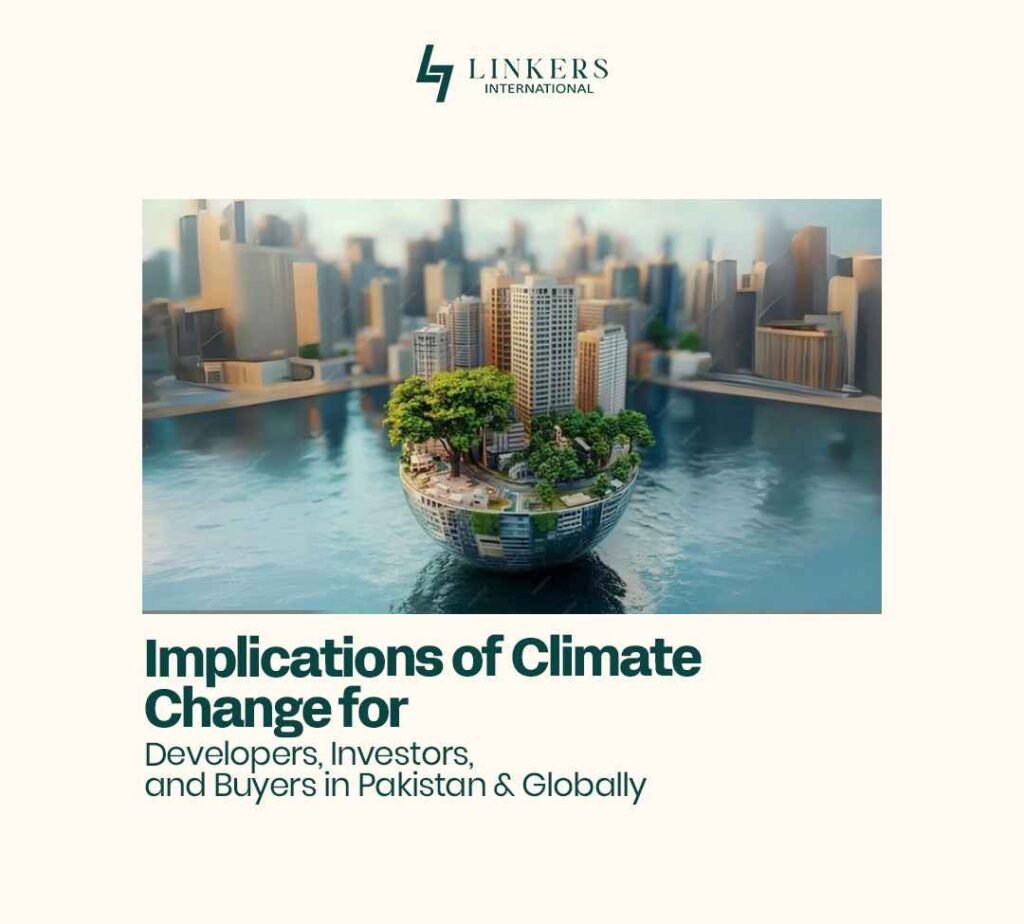
The real estate stakeholders must expedite their efforts to mitigate the effects of Climate Change. Here are some of the consequences, and what different stakeholders should think about.
For Developers & Property Owners
- Need to factor risk into site selection, avoid or mitigate development in zones exposed to sea level rise, storm surge, and erosion.
- Incorporate climate‑resilient building design, raised foundations, flood‑proofing, drainage, storm‑resistant materials, and resilient infrastructure.
- Use natural buffers, preserving mangroves, vegetation, dunes, and wetlands; these can reduce damage and maintain property attractiveness.
- Stay ahead of regulatory changes, as governments begin zoning laws or require buffer zones or environmental impact assessments, being compliant early reduces risk.
For Investors & Buyers
- Evaluate long‑term risk, not just current appeal or view. Will this property still be safe, insurable, habitable in 20‑30 years?
- Use risk assessments, flood maps, sea level rise projections, storm surge risk, soil erosion, and groundwater salinity.
- Consider location carefully, elevation, distance from coast, quality of natural protection (mangroves, dunes), and drainage infrastructure.
- Discounting risk, properties in high-risk zones may require a discount relative to similar properties in safer zones.
- Diversification: avoid putting all investment in high‑risk coastal zones; spread out geographically.
The Bottom Line
Climate change is already affecting property values, both around the world and here in Pakistan. Areas that face flooding, erosion, or heat are becoming riskier and more expensive to maintain. Buyers are more careful, and new rules may make construction harder or costlier.
For developers, investors, and homeowners, ignoring these risks of climate change is no longer an option. Planning, building smarter, and choosing the right locations will make the difference between a property that keeps its value and one that doesn’t. In a country like Pakistan, where many areas are vulnerable, this kind of smart planning is more important than ever.


